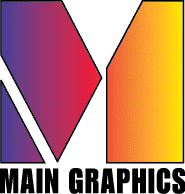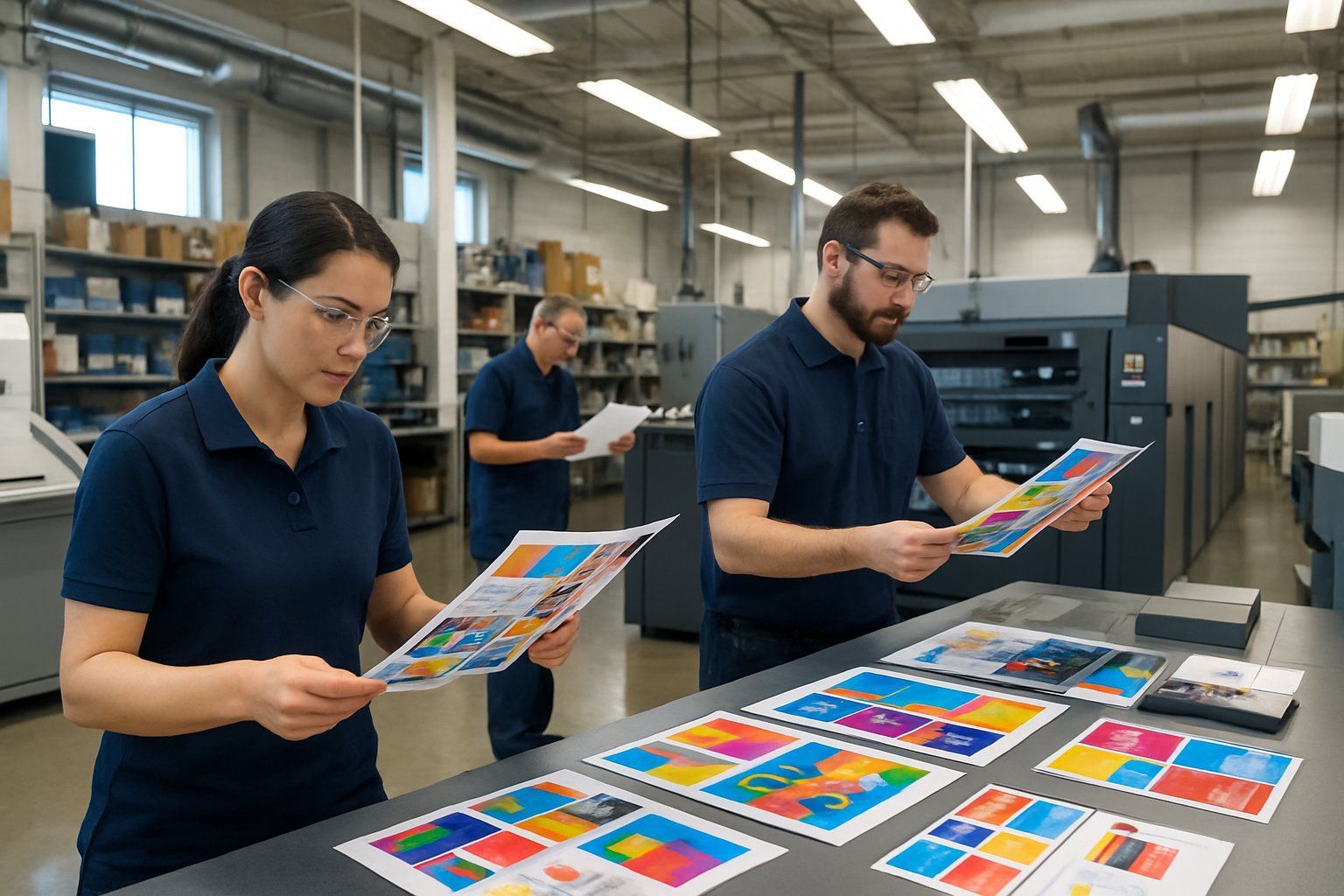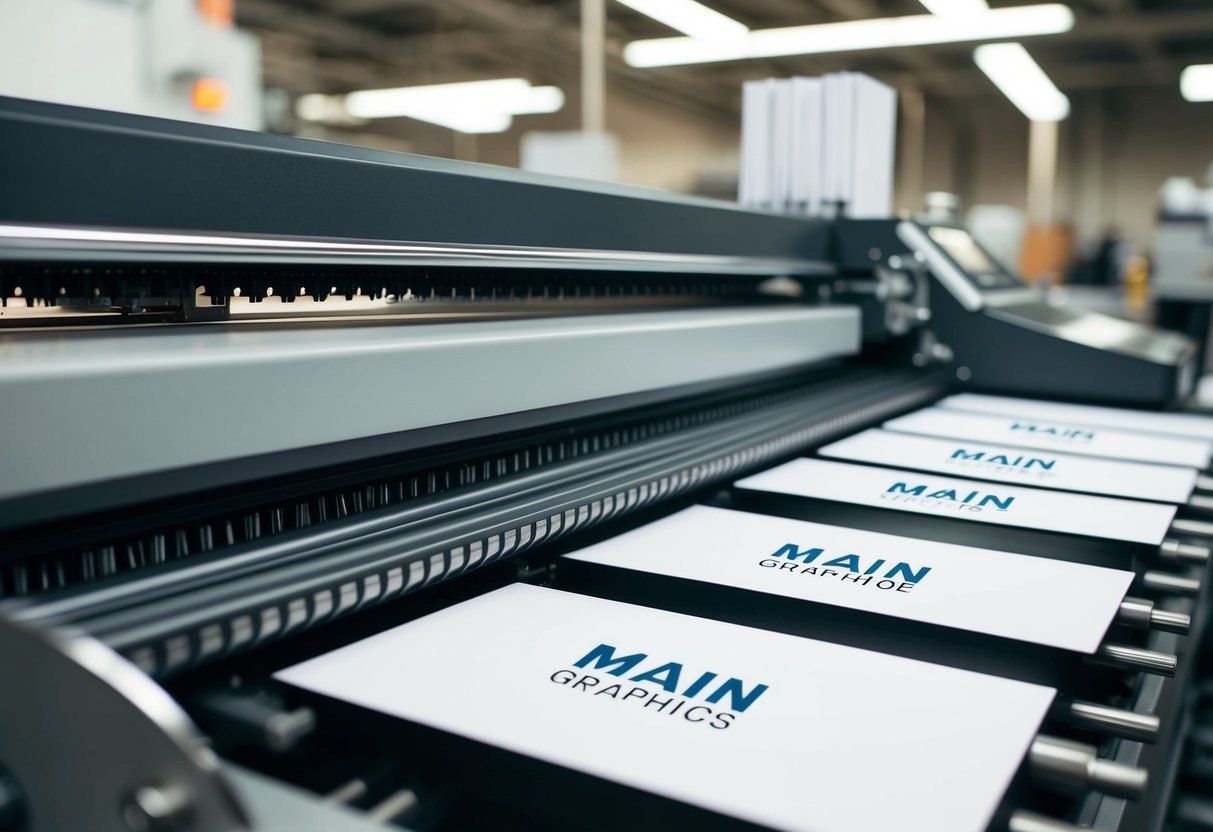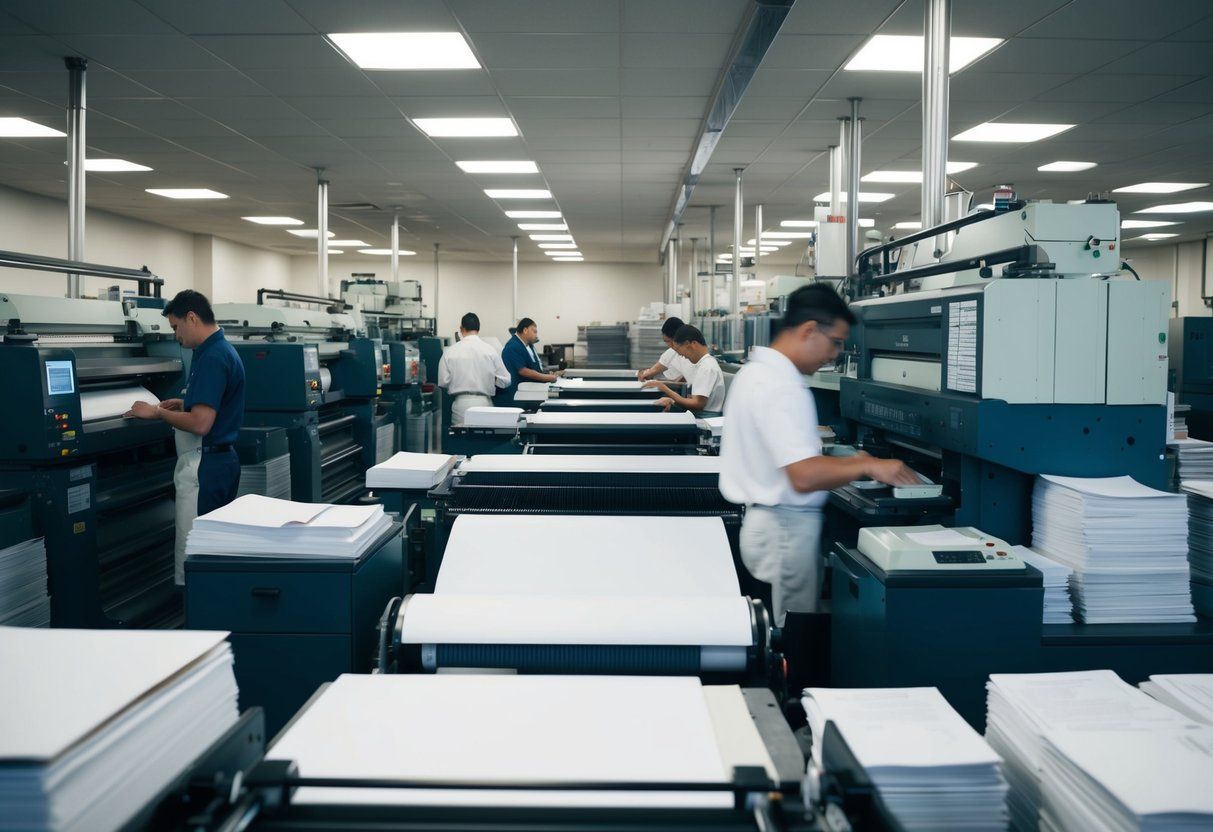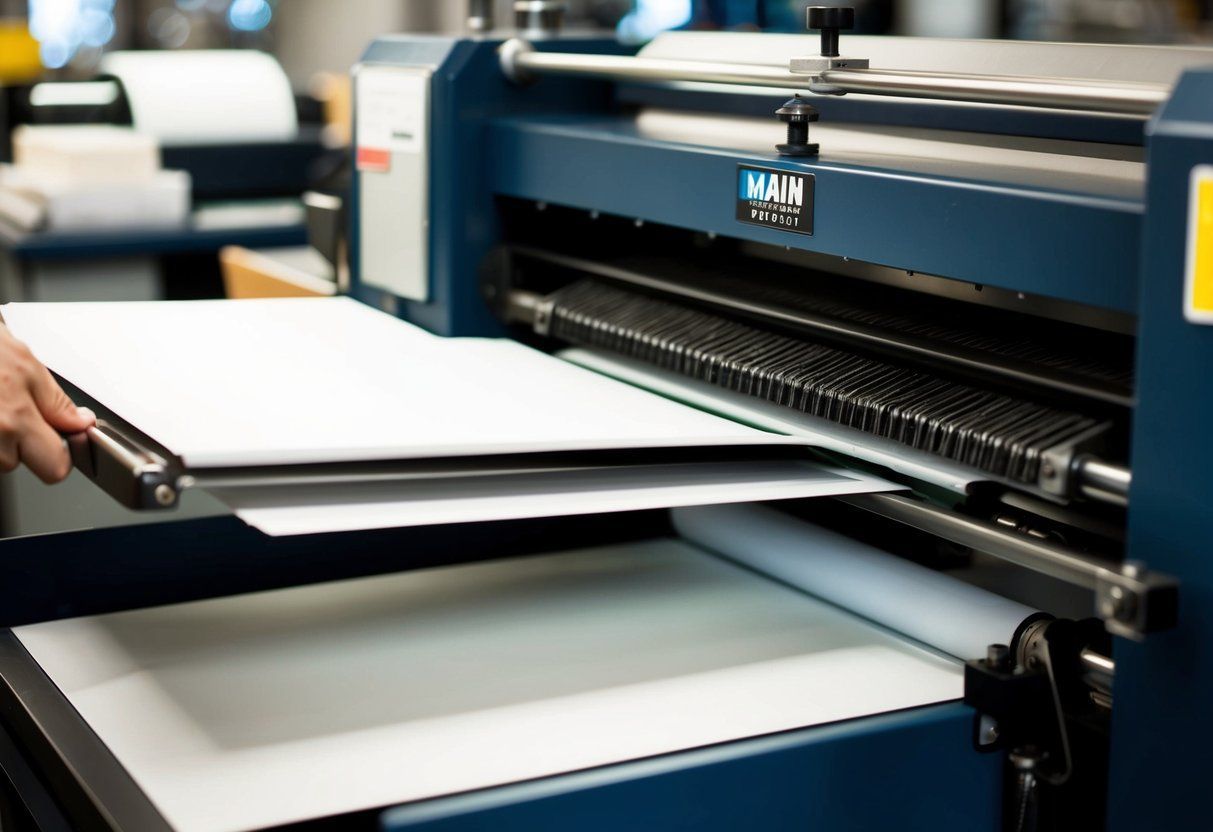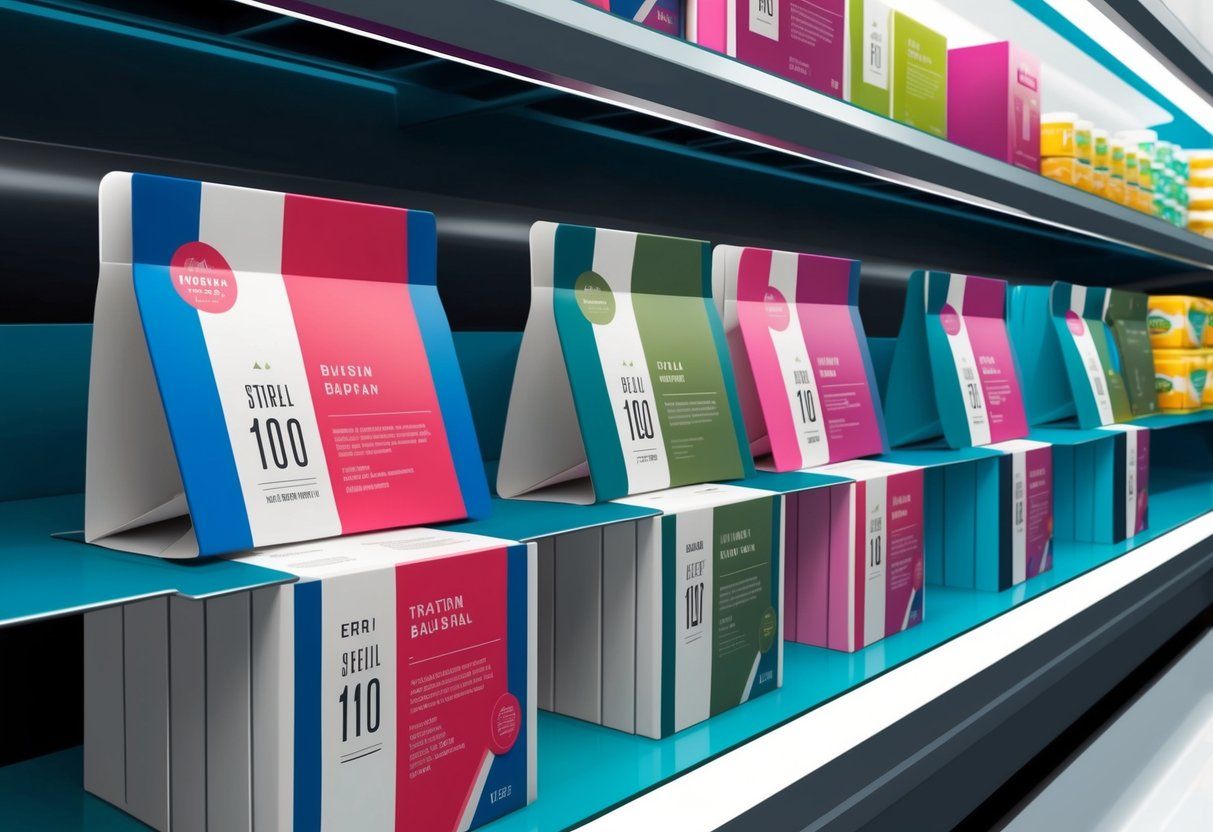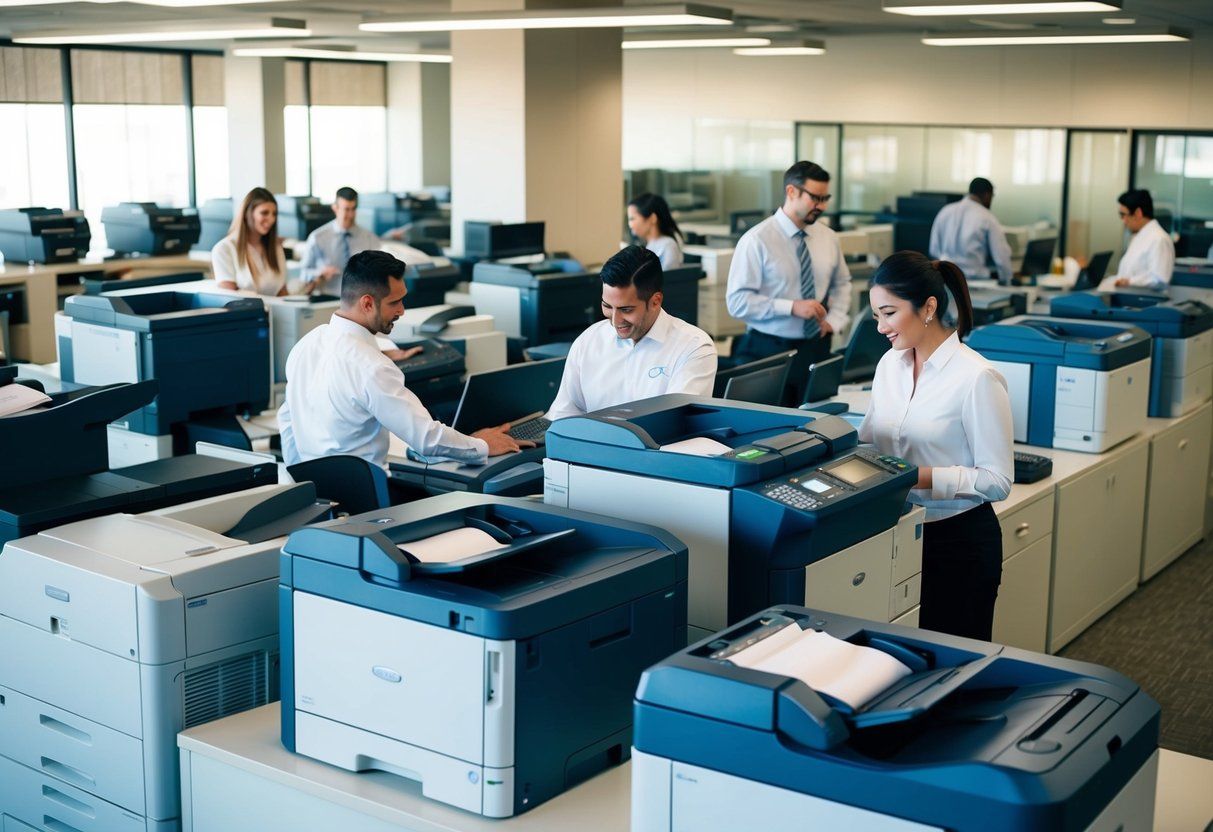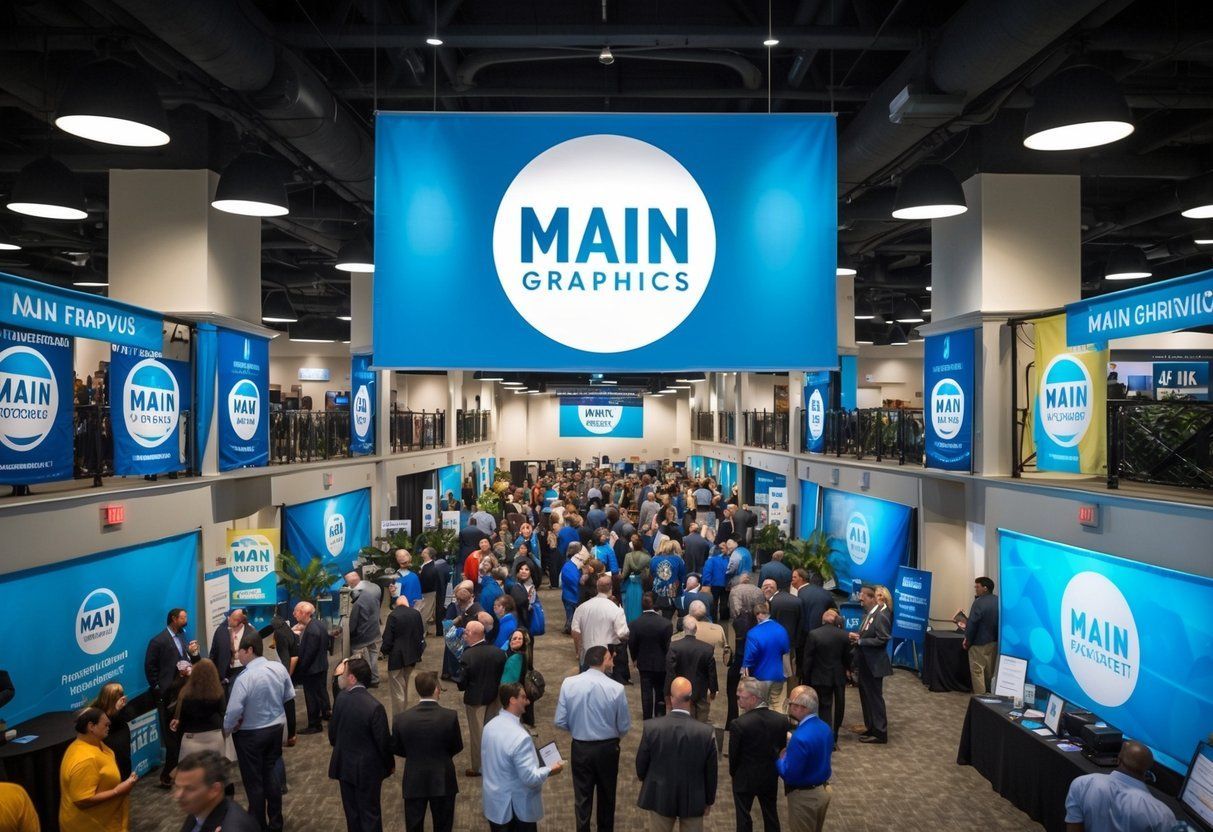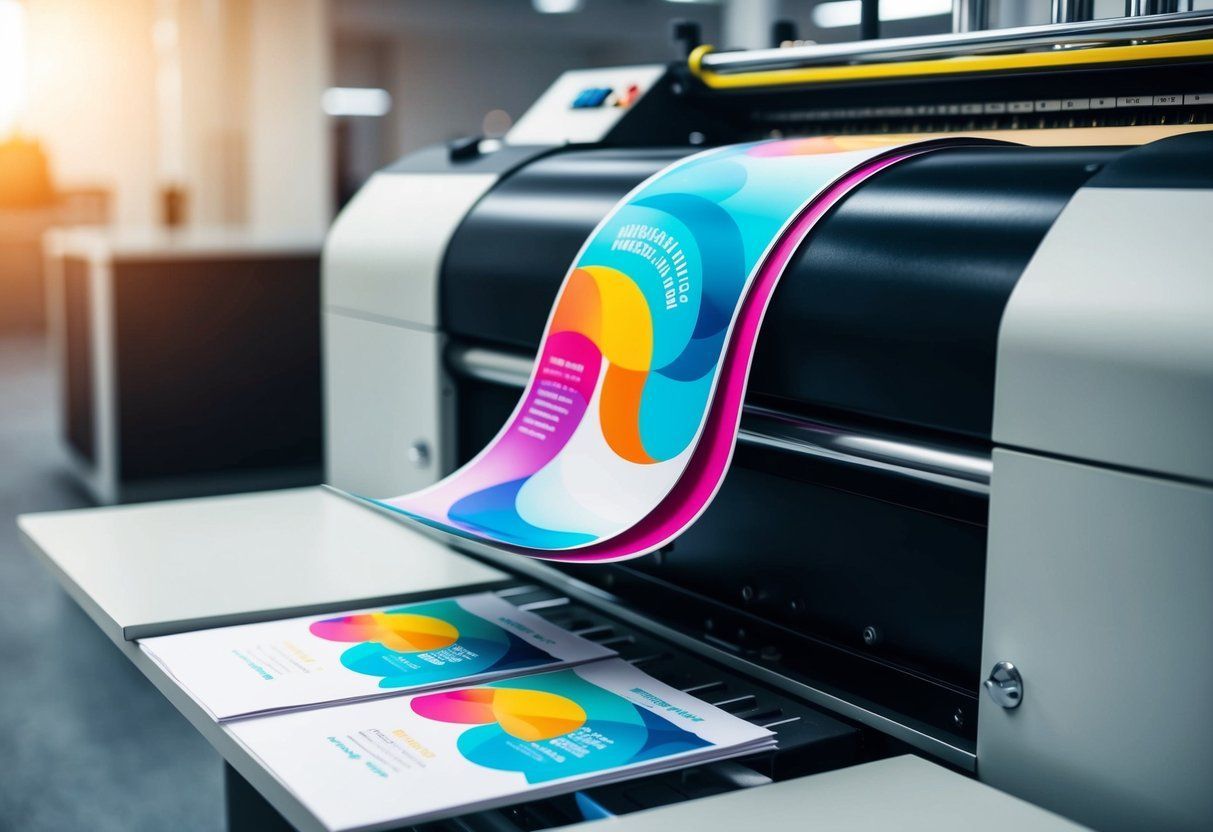Large-Format Printing Solutions for High-Impact Visual Communications
Large-format printing , a specialized division within the printing industry, caters to projects that demand dimensions beyond standard sizes. This type of printing encompasses a variety of products such as banners , posters , trade show graphics, wallpapers, murals, backdrops, and more. With the advent of advanced digital printing technology, large-format printing offers unparalleled flexibility in terms of scale, with the capacity to print on a vast array of materials like paper, fabric, glass, metal, and plastic.
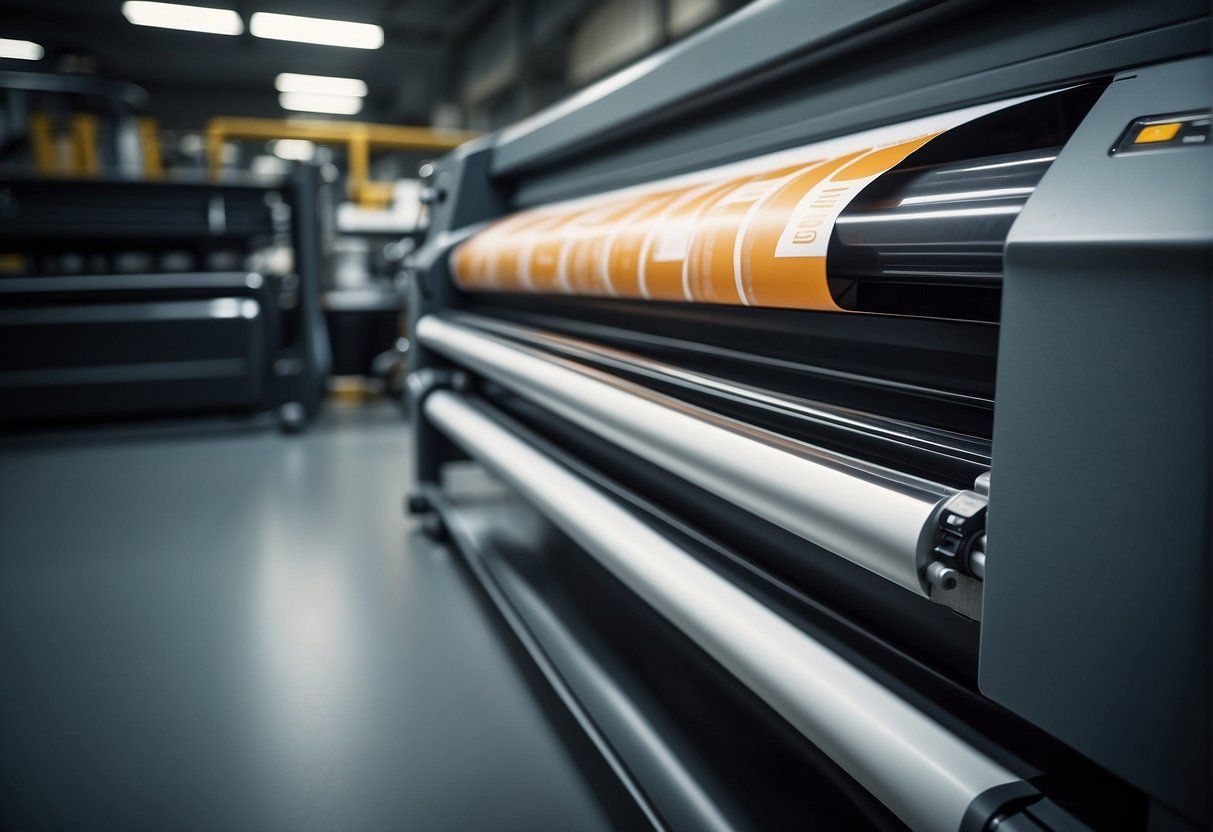
The technology behind large-format printing involves state-of-the-art printers capable of producing high-quality images and colors with excellent precision. These printers are not only robust but also versatile, making it possible to cater to custom orders and a spectrum of client needs. Utilizing cutting-edge inkjet or laser technologies, they can rapidly produce crisp and vivid graphics that are ideal for both indoor and outdoor applications.
Digital printing technology has revolutionized large-format printing by offering quicker turnaround times and lower production costs, especially for high-volume orders. The digital process also allows for easy updates to graphics and seamless replication of complex designs. As a result, businesses and advertisers are increasingly relying on large-format printing solutions to make a significant visual impact and reach their marketing objectives.
Understanding Large-Format Printing

Large-format printing refers to print jobs that require specialized printing equipment capable of handling larger print sizes and superior quality outputs. These printing solutions are essential for a myriad of applications and are innovations that seamlessly blend technology and design.
Defining Large Format Printing
Large-format printing is a printing technique that supports maximum print roll widths between 18 inches to 100 inches. Printers that handle these dimensions are known as large-format printers. They operate on a range of materials, including vinyl, fabrics, and paper, offering versatility to the printing process. Quality is a critical aspect, as large-format printing must maintain high resolution even at immense sizes, making sophisticated technology integral to the process. The inks used in large-format printers are also specific to the printing technique, ensuring durability and color fidelity.
Applications of Large-Format Printing
Large-format printing is utilized across various sectors for its ability to produce high-quality, enlarged images that attract attention. Below is a table outlining typical applications:
| Sector | Application | Description |
|---|---|---|
| Advertising | Billboards and Banners | Utilized for high-impact outdoor advertising to capture attention from afar. |
| Retail | Point-of-Purchase Displays | Used in-store to promote products or convey branding messages. |
| Events | Backdrops and Signage | Essential for branding at trade shows , exhibitions, or corporate events. |
| Interior Design | Wall Murals and Decor | Provides customized, aesthetic enhancements to interiors. |
| Construction | Architectural Drawings | Enables detailed, large-scale prints of blueprints and plans. |
These applications exemplify the integration of large-format printers into numerous industries, capitalizing on the technology’s ability to produce expansive, eye-catching visuals. Innovations in large-format printing continue to advance the quality , offering clearer, more vibrant prints across a wider array of materials, thus expanding the potential for creative design further into new territories.
Key Components of Large Format Printing Solutions
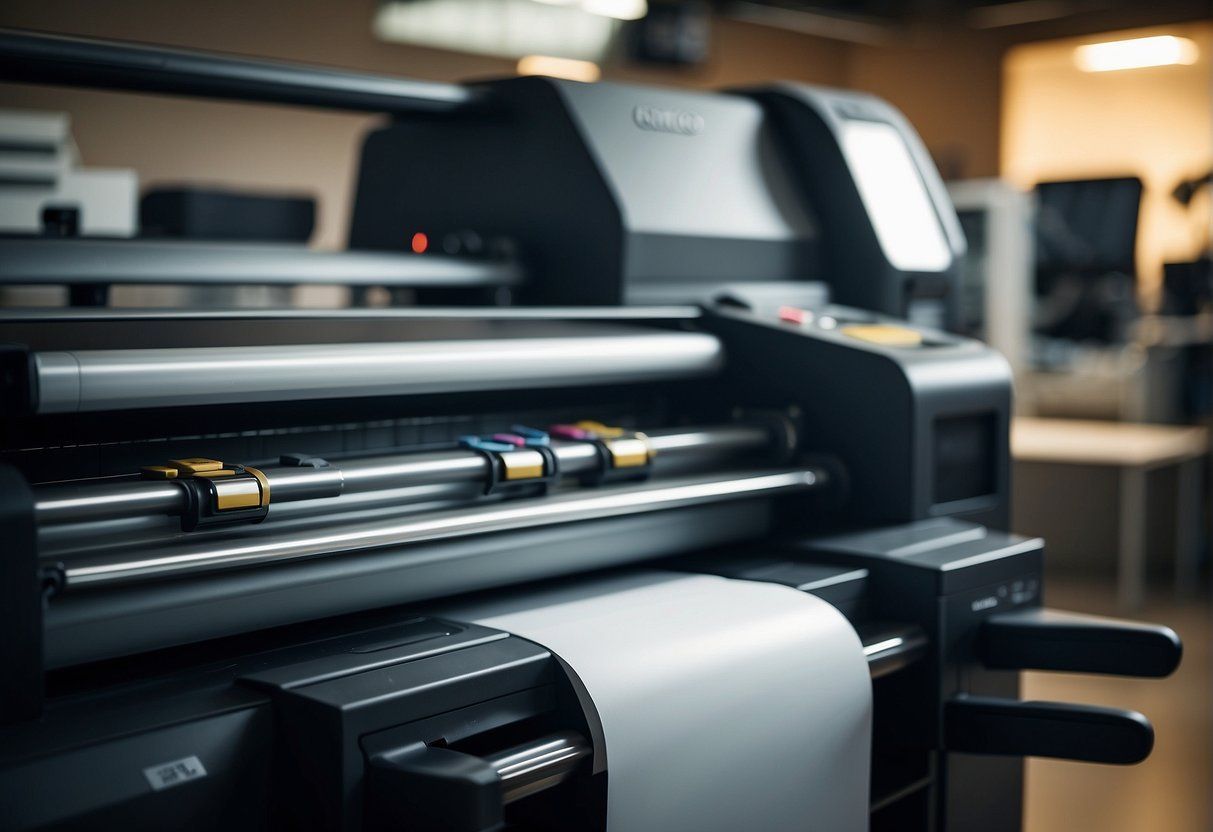
Large format printing solutions encompass a variety of printers, materials, and processes designed to produce graphics at an extensive scale. They include advanced printing technologies and a selection of inks and materials optimized for various applications, as well as finishing techniques that enhance durability and facilitate installation.
Large Format Printers and Technology
The foundation of large format printing is the printers themselves, which fall into categories based on their output capabilities and the technology they employ. Inkjet printers are widely used, valued for their ability to produce full-color graphics with high precision. These printers operate using technologies such as thermal inkjet or piezoelectric inkjet , which determine how the ink is expelled onto the substrate.
- Thermal inkjet: Utilizes heat to create a bubble that forces ink out of the nozzle.
- Piezoelectric inkjet: Relies on electric charges that change the shape of the piezo crystal, ejecting ink droplets.
The size of the printer typically dictates the maximum width of the media that can be printed on, which can range up to 100 inches or more, accommodating a vast range of project sizes.
Materials and Ink Choices
The selection of materials and inks is critical for large format printing solutions, especially given the wide range of possible applications from indoor graphics to outdoor signage. Substrates include but are not limited to:
- Vinyl
- Canvas
- Polyester
- Paper
Each material offers distinct qualities in terms of durability, finish, and flexibility. Inks play an equally important role and must be chosen based on the desired output quality and longevity. There are several ink types used in large format printing:
- Solvent inks: Durable and resistant to UV and weather, ideal for outdoor use.
- UV-curable inks: Instantly cured by UV light, highly durable, versatile for various media.
- Dye-sublimation inks: Sublimate into the material for vibrant, long-lasting graphics on fabrics.
Finishing and Installation Considerations
After the printing is complete, the finishing process can include lamination, mounting, or cutting, depending on the application. Lamination provides additional protection against fading and weather, while mounting onto rigid substrates helps support the graphic for display. Precise cutting ensures that the final product aligns with the intended design specifications.
- Lamination: Adds a protective layer.
- Mounting: Secures the print to a firm base.
- Cutting: Shapes the graphic to its final dimensions.
The consideration of installation methods is essential, with factors such as the location, surface type, and environmental conditions influencing the choice of adhesives and fixings. Installers must have a full understanding of the physical space where the print will be displayed to ensure proper placement and longevity of the graphic.
Design and Production Processes
Large-format printing encompasses a comprehensive process from initial design to the final production run. Specialized design services harness a variety of tools to ensure the artwork is optimized for large-scale reproduction. Production and engineering workflows are rigorously structured to transition smoothly from design to physical product, while integrating automation to enhance precision and efficiency.
Design Services and Tools
Design Services range from basic layout creation to advanced graphic design tailored for large-format outputs. The services often start with a client consultation to understand the specific design and shape requirements. Designers then use professional-grade software like Adobe Illustrator or CorelDRAW to construct scalable vector graphics suitable for large format printing.
Tools utilized in the design phase typically include:
- Vector-based software : for creating scalable designs without loss of quality (e.g., Adobe Illustrator).
- Raster-based software : primarily used for intricate images that require a bitmap format (e.g., Adobe Photoshop).
- File formats : Common file formats for large-format printing include PDF, JPEG, and TIFF. Designers ensure that images are high resolution and in the correct color space for printing.
Designers check the artwork’s scalability and resolution to guarantee the final print retains clarity and impact.
Production and Engineering Workflow
In the Production Processes , a detailed plan is executed to turn designs into large-format prints. This phase involves:
- Prepress : preparing the design files for printing, which may include color corrections and proofing.
- Print Production : utilizing large-format printers that can accommodate various materials and sizes.
- Post-Production : including cutting, lamination, and mounting depending on the application.
Engineering Workflow ensures consistent quality through:
- Automation : Large-format printers are often equipped with automated features for material handling, printing, and cutting to streamline production and reduce errors.
- Quality Control : Engineering teams run tests to confirm that the print meets the set standards for color fidelity and detail.
Proper coordination between design and production ensures that final prints mirror the intended design accurately and are produced efficiently whilst maintaining quality.
Practical Uses and Case Studies
Large-format printing plays a pivotal role in marketing and communications, offering tangible solutions for businesses to enhance their visibility. The versatility of the technology allows for a wide array of applications, from eye-catching retail displays to custom packaging that captivates consumers.
Retail and Event Signage
Retailers often turn to large-format printing to create signs and banners that grab the attention of potential customers. These prints are utilized to announce sales, direct customer flow, or highlight new products. For example, a department store may use large, colorful banners to promote a seasonal sale, while a bookstore could employ smaller floor graphics to guide customers to specific genres or promotions.
| Case Studies | Solution | Impact |
|---|---|---|
| Department Store Sale | Large Banners with Sale Messaging | Increased foot traffic and sales during the promotion period. |
| Bookstore Layout Guide | Directional Floor Graphics | Improved customer navigation and satisfaction. |
Events ranging from trade shows to music festivals make extensive use of large-format prints. These materials include event signage for directing attendees, trade show graphics that brandish company identities, and billboards that advertise the event itself.
| Event Type | Solution | Impact |
|---|---|---|
| Trade Show | Custom Booth Graphics | Enhanced brand recognition and visitor engagement. |
| Music Festival | Site-Wide Signage | Efficient crowd management and enhanced festival experience. |
Custom Packaging and Advertisement
The rise of bespoke retail experiences has led to an increased demand for custom packaging solutions. Large-format printers can produce small runs of personalized boxes or bags, adorned with vibrant graphics and text that promote brand identity. A boutique might use uniquely designed packaging as a form of advertisement, engaging customers even after they have left the store.
In the realm of advertisement, large-format prints are not limited to billboards and posters. A creative agency might produce a series of window graphics for a product launch, transforming store fronts into powerful advertising spaces. Similarly, custom stickers can serve as mobile advertisements when applied to company vehicles or given away as promotional items.
| Application | Solution | Impact |
|---|---|---|
| Boutique Packaging | Custom Printed Bags and Boxes | Reinforced brand identity and customer loyalty. |
| Product Launch | Store Front Window Graphics | Created buzz and increased product visibility. |
Cost Management and Budgeting
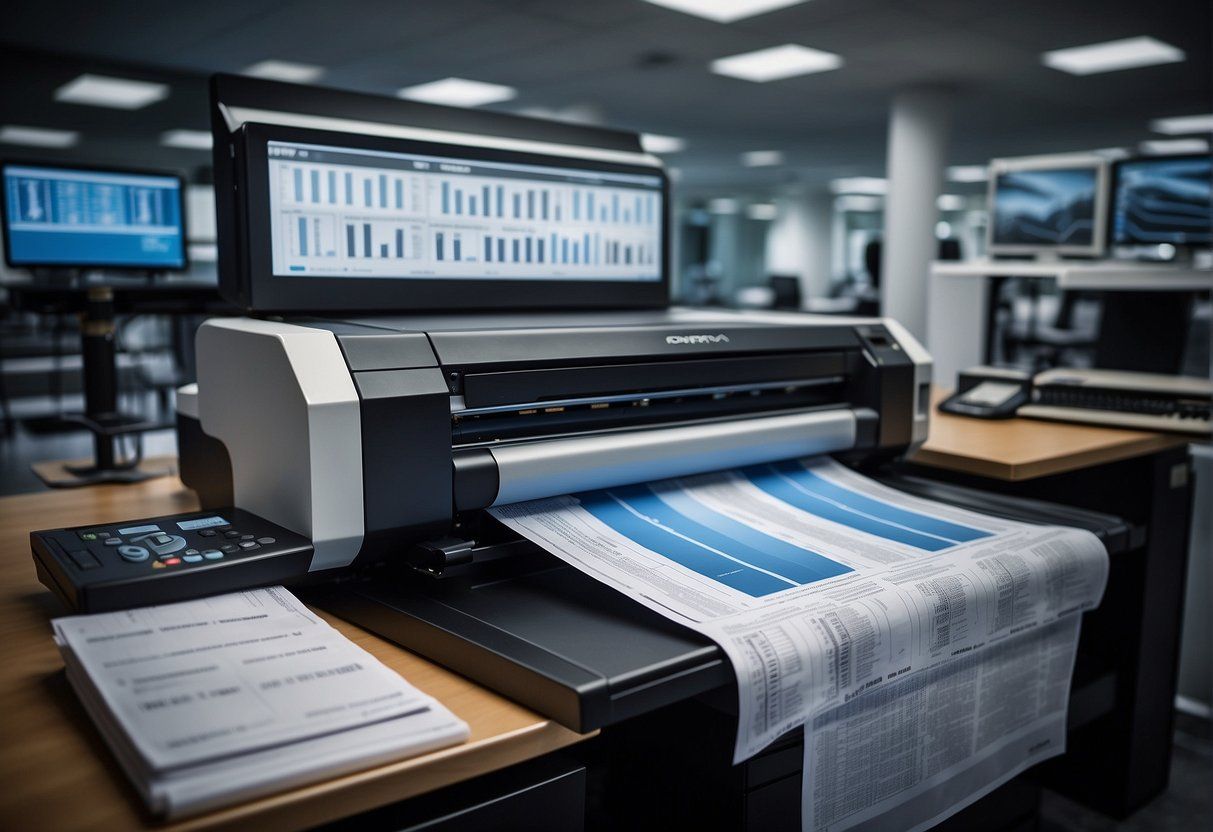
In large-format printing, effective cost management ensures profitability while maintaining a high-quality product. Anticipating expenses and strategizing on the investment return are fundamentals for budget adherence.
Calculating Costs and ROI
To accurately manage costs, one must itemize each expense, considering factors such as materials, maintenance, and labor. A detailed table like the one below helps in identifying and tracking these components:
| Expense Category | Details | Estimated Cost |
|---|---|---|
| Material Costs | Ink, substrate, finishing | $XX.XX |
| Labor | Design, printing, installation | $XX.XX |
| Equipment | Depreciation, maintenance | $XX.XX |
| Overhead | Utilities, rent, administration | $XX.XX |
Calculating the Return on Investment (ROI) places sales projections in perspective to the costs. It’s critical to estimate how long it will take for the sales of large-format prints to cover these initial and recurring expenses. Efficiently managed, the printing business can thrive on a well-calculated ROI strategy.
Budgeting for Quality and Size
The size and quality of the print significantly affect the budget. Larger, high-resolution prints require more resources which translate to higher expenses. Therefore, a balance between the desired quality and size versus the available budget is a constant consideration. The following list illustrates key budgeting concerns:
- Materials : High-quality inks and premium substrates increase cost but enhance product longevity and aesthetic appeal.
- Technology : Investment in advanced printing technology may lead to better efficiency and lower long-term costs.
- Maintenance : Regular upkeep of printing equipment is essential to avoid costly repairs and downtime.
When one establishes a well-informed budget considering these factors, management can maintain cost-effectiveness without compromising on the size and quality that customers expect from a high-quality large-format product.
Aftercare and Maintenance
Effective aftercare and maintenance are critical for ensuring the longevity of large-format printers and the quality of printed materials. Tailored management strategies and the adoption of new technologies are essential for maintaining optimal performance.
Longevity and Upkeep
Longevity is directly tied to regular upkeep . Owners of large-format printers should implement a detailed maintenance plan that includes:
- Daily Tasks: Wiping down the printer surface to remove dust and debris, and checking for any error messages or alerts on the printer console.
- Weekly Tasks: Inspecting ink levels and print heads for any signs of clogging or degradation.
- Monthly Tasks: Thoroughly cleaning the print heads, rollers, and other components subject to wear and tear.
Additionally, the incorporation of innovation in maintenance technology, such as automated cleaning systems, can substantially contribute to the machine’s consistent output and longevity.
Future-Proofing Large-Format Printing
To future-proof large-format printing solutions, management must prioritize both technology upgrades and innovation . This involves:
- Staying Informed: Keeping up-to-date with software and firmware upgrades that can enhance the printer’s capabilities or address security concerns.
- Investment: Allocating resources for the potential replacement of outdated components with more efficient and environmentally friendly options.
- Training: Ensuring that staff are trained on new technologies and best practices in printer maintenance and management to maximize the printer’s lifespan and performance.
Frequently Asked Questions
This section provides succinct answers to common queries regarding large-format printing solutions tailored for various business needs.
What are the best printing services for small businesses?
For small businesses, the best printing services are those that offer customizable options, scalability, and competitive pricing. Companies like Vistaprint, FedEx Office, and local print shops often cater to the unique needs of smaller enterprises.
How can I find a cost-effective large format printer?
To find a cost-effective large format printer, one should compare prices from multiple suppliers, consider refurbished models, and look for printers that support varying media types and sizes to reduce waste. Checking reviews and seeking recommendations from industry peers can also be helpful.
What are the primary types of large format printing?
The primary types of large format printing include inkjet printing for photographic-quality prints, solvent printing for durable outdoor signage, and dye-sublimation for fabric printing. Each type has specific benefits suitable for different applications.
Where can I locate large format printing services in my vicinity?
One can locate nearby large format printing services by searching online business directories, asking for referrals from industry contacts, or exploring local business districts where print shops are commonly found.
How do I choose the right large format printing service for bulk orders?
To choose the right large format printing service for bulk orders, evaluate their print quality, turnaround times, and ability to handle high-volume requests consistently. It’s essential to assess their experience with similar projects and read customer testimonials.
What design software is recommended for creating large format print-ready files?
For creating large format print-ready files, software like Adobe Illustrator, CorelDRAW, and Adobe Photoshop is recommended due to their advanced tools for high-resolution designs and the ability to handle large file sizes efficiently.…
